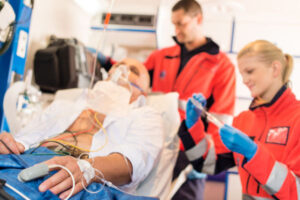
Introduction to Emergency Life Support
Introduction to Emergency Life Support
Understanding Emergency Life Support
Emergency Life Support (ELS) refers to a set of critical techniques and procedures that are used to preserve life in emergency situations, such as cardiac arrest, choking, and severe injuries. ELS encompasses various life-saving methods, including cardiopulmonary resuscitation (CPR), first aid, and automated external defibrillator (AED) usage. These skills are essential for anyone, as emergencies can occur at any time and in any place.
The primary goal of ELS is to stabilize a person’s condition until professional medical help arrives. By providing immediate assistance, individuals trained in ELS can significantly improve a victim’s chances of survival and recovery. This article explores the importance of emergency life support training, the core skills taught, and the benefits of acquiring these life-saving techniques.
The Importance of Emergency Life Support Training
Saving Lives
One of the most compelling reasons for individuals to pursue ELS training is the potential to save lives. According to the American Heart Association, effective CPR can double or triple a victim’s chances of survival after cardiac arrest. Knowing how to act quickly and confidently in emergencies can make a significant difference in critical situations.
Promoting Community Safety
Emergency Life Support training not only empowers individuals but also promotes safety within communities. When more people are trained in life-saving techniques, the likelihood of timely intervention during emergencies increases. This collective knowledge fosters a culture of preparedness, where individuals are more vigilant and equipped to handle crises.
Enhancing Personal Confidence
Participating in ELS training can enhance personal confidence. Knowing that you possess the skills to respond to emergencies can alleviate feelings of helplessness during a crisis. Training provides participants with practical experience, enabling them to react effectively and calmly when faced with an emergency.

Introduction to Emergency Life Support
Core Components of Emergency Life Support Training
Cardiopulmonary Resuscitation (CPR)
CPR is one of the most critical components of emergency life support. It involves a combination of chest compressions and rescue breaths designed to maintain blood flow and oxygenation to vital organs when a person’s heartbeat and breathing have stopped.
Training typically covers the following aspects of CPR:
Recognizing Cardiac Arrest: Understanding the signs of cardiac arrest and when to initiate CPR is essential. Common indicators include unresponsiveness and lack of normal breathing.
Performing Chest Compressions: Effective chest compressions should be firm and fast, at a rate of 100 to 120 compressions per minute. Proper technique involves placing hands on the center of the chest and compressing to a depth of about two inches.
Rescue Breaths: If trained to do so, responders will also provide rescue breaths after every 30 compressions, using a barrier device if available to minimize risk.
Automated External Defibrillator (AED) Usage
An AED is a portable device that can analyze the heart’s rhythm and deliver an electric shock, if necessary, to restore a normal heartbeat. Training in AED usage is typically included in ELS courses:
Understanding AED Functions: ELS training covers how to turn on the device, attach the pads to the victim’s chest, and follow the device’s voice prompts.
Timing of Use: Using an AED as soon as possible is crucial for improving survival rates in cases of sudden cardiac arrest. Training helps participants recognize when to utilize an AED effectively.
First Aid Basics
First aid skills are integral to ELS training, providing immediate care for various injuries and medical emergencies. Training often includes:
Wound Management: Learning how to clean and dress wounds, control bleeding, and recognize signs of infection.
Choking Relief: Techniques for helping someone who is choking, such as the Heimlich maneuver for adults and modified approaches for infants and children.
Recognizing Medical Emergencies: Identifying signs and symptoms of common medical emergencies, such as stroke (using the FAST method) and allergic reactions.
Types of Emergency Life Support Courses
Basic Life Support (BLS)
Basic Life Support (BLS) courses are designed for healthcare professionals and laypeople alike. These courses focus on essential CPR techniques, AED usage, and basic first aid skills. BLS certification is often a requirement for various jobs in healthcare and emergency services.
Advanced Cardiac Life Support (ACLS)
Advanced Cardiac Life Support (ACLS) is aimed at healthcare providers who respond to cardiovascular emergencies. This course builds upon BLS training and includes advanced interventions, such as medication administration and advanced airway management.
Pediatric Advanced Life Support (PALS)
Pediatric Advanced Life Support (PALS) is specialized training for responding to emergencies involving infants and children. This course covers pediatric assessment, recognizing severe illnesses in children, and providing effective resuscitation techniques tailored to younger patients.
Where to Obtain Emergency Life Support Training
Emergency Life Support training is widely available through various organizations, including:
American Red Cross: Offers a range of ELS courses, including CPR, first aid, and AED training. Classes are available online and in-person.
American Heart Association: Provides training for BLS, ACLS, and PALS, focusing on the latest evidence-based guidelines.
Community Colleges and Hospitals: Many community colleges and local hospitals offer ELS training programs tailored to different audiences, including healthcare professionals and the general public.
Online Courses: Numerous online platforms provide ELS training, allowing participants to learn at their own pace. However, practical skills practice is essential, so a blended approach with in-person training is often recommended.
Conclusion
Emergency Life Support training is a vital resource for individuals seeking to prepare for unexpected emergencies. By equipping people with the knowledge and skills to respond effectively, ELS training empowers communities, saves lives, and enhances personal confidence. Whether through CPR, AED usage, or basic first aid, the skills learned in these courses can have a profound impact. Everyone should consider enrolling in an ELS course to ensure they are prepared to act in times of crisis, contributing to a safer environment for all. Investing time in learning these essential life-saving techniques could make all the difference in an emergency.
